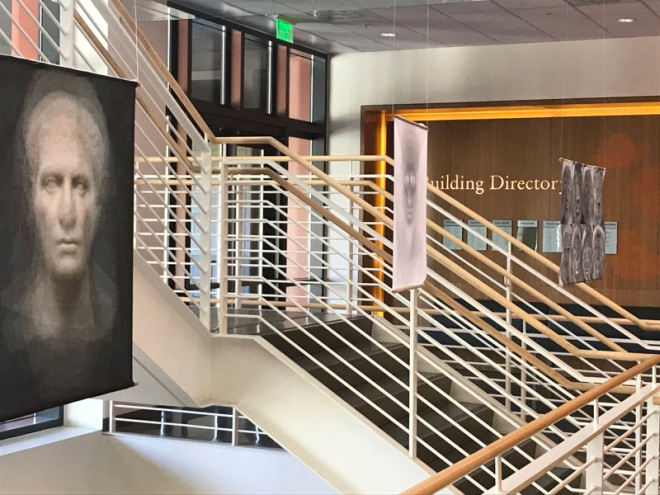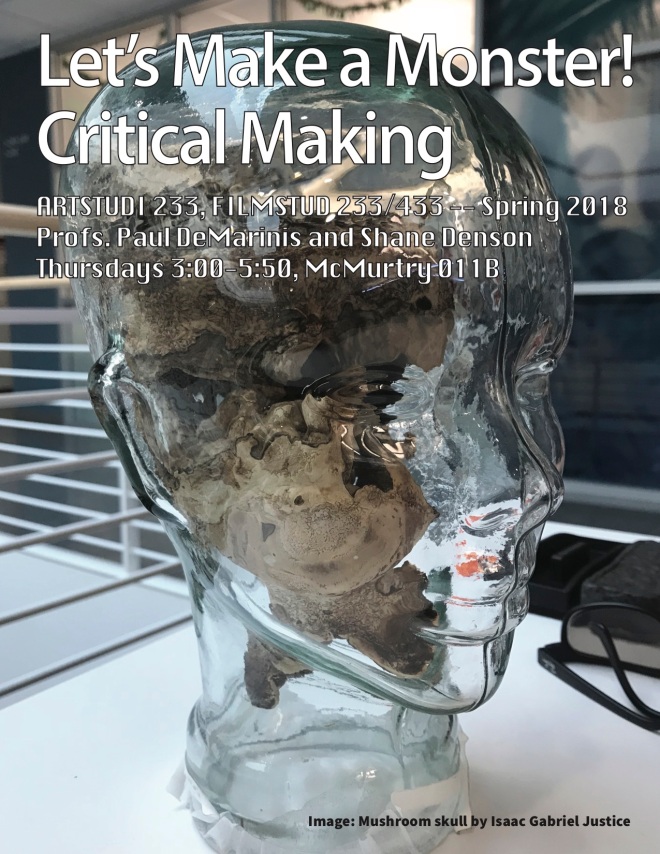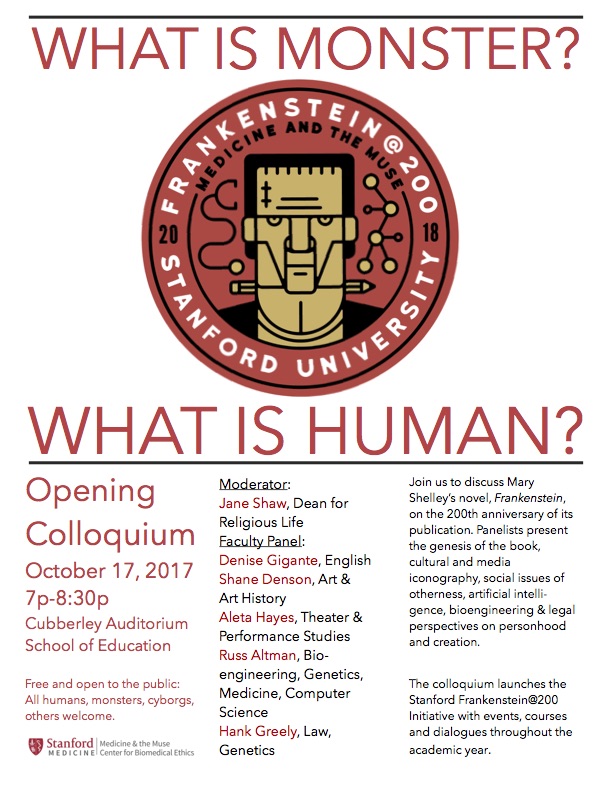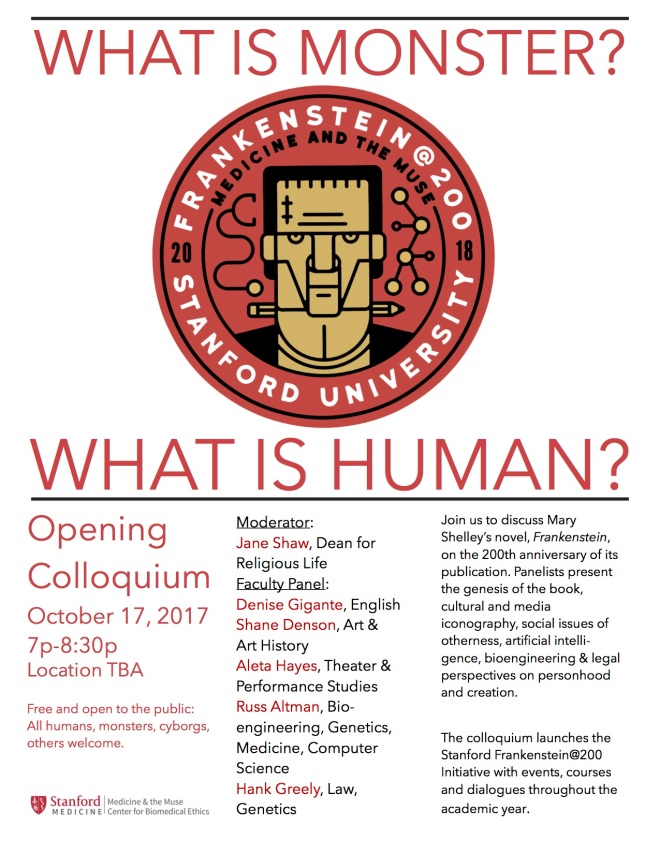
Works from the course “Let’s Make a Monster: Critical Making,” which I co-taught this quarter with my art practice colleague Paul DeMarinis, are currently on display in the Shriram Center for Bioengineering and Chemical Engineering at Stanford University. The show, which officially opened today, is up through Friday, June 8.
We are particularly excited to take this work across campus and show it in the context of a space devoted to cutting-edge engineering work, where we hope that it provokes thought and discussion about the transformations of technology, experience, and life itself taking place in Silicon Valley and elsewhere. Thanks especially to Prof. Drew Endy for his help in facilitating and making this show possible.
Here are just a few glimpses of the work on display.
Nora Wheat, Decode (2018)
Hieu Minh Pham, The Knot (2018)
Raphael Palefsky-Smith, Brick (2018) — more info here
David Zimmerman, Eigenromans I-III (2018)
Jennifer Xilo, Mirror for Our Upturned Palms (2018)
Jackie Langelier, Creepers (2018)
































